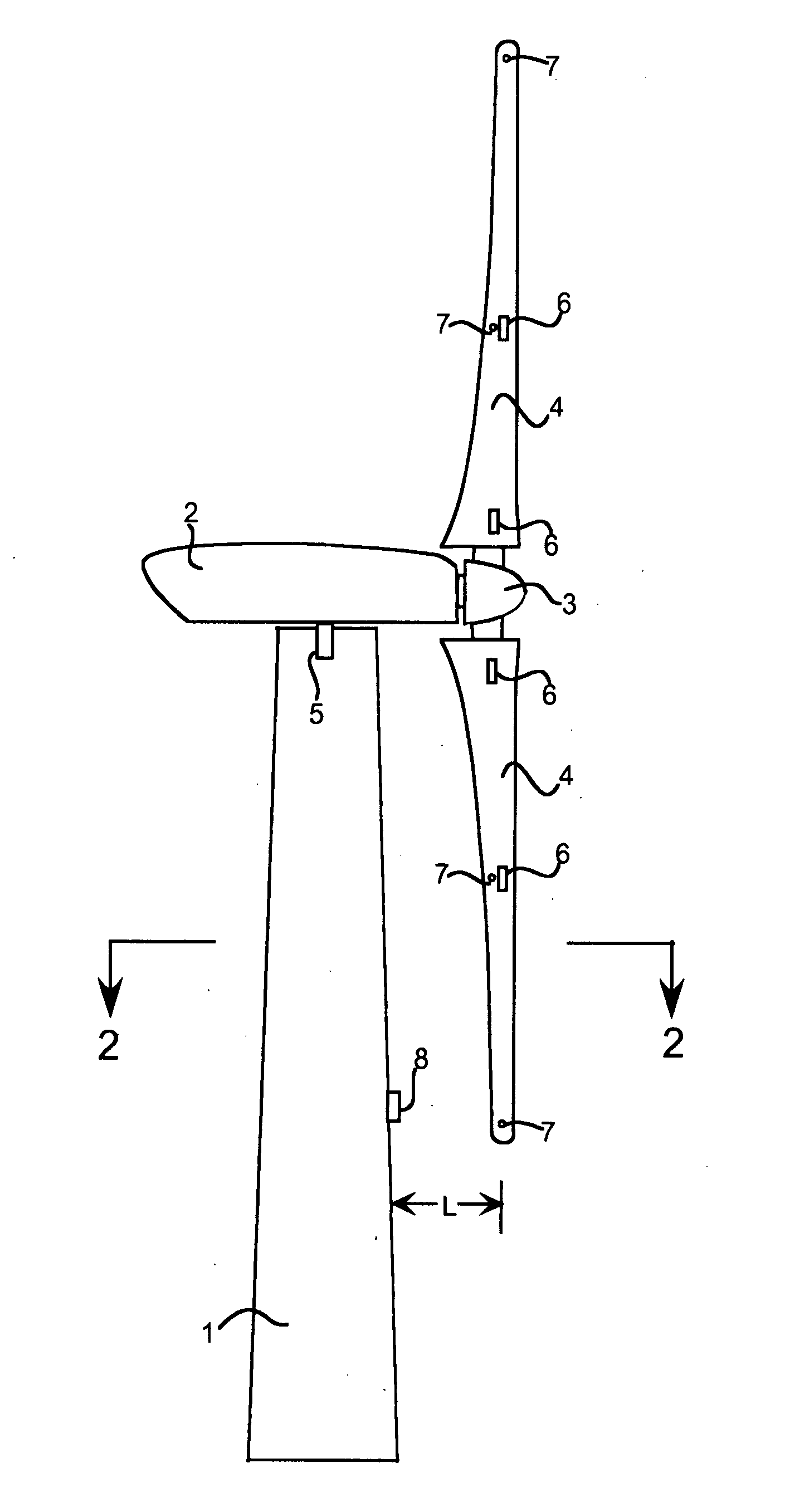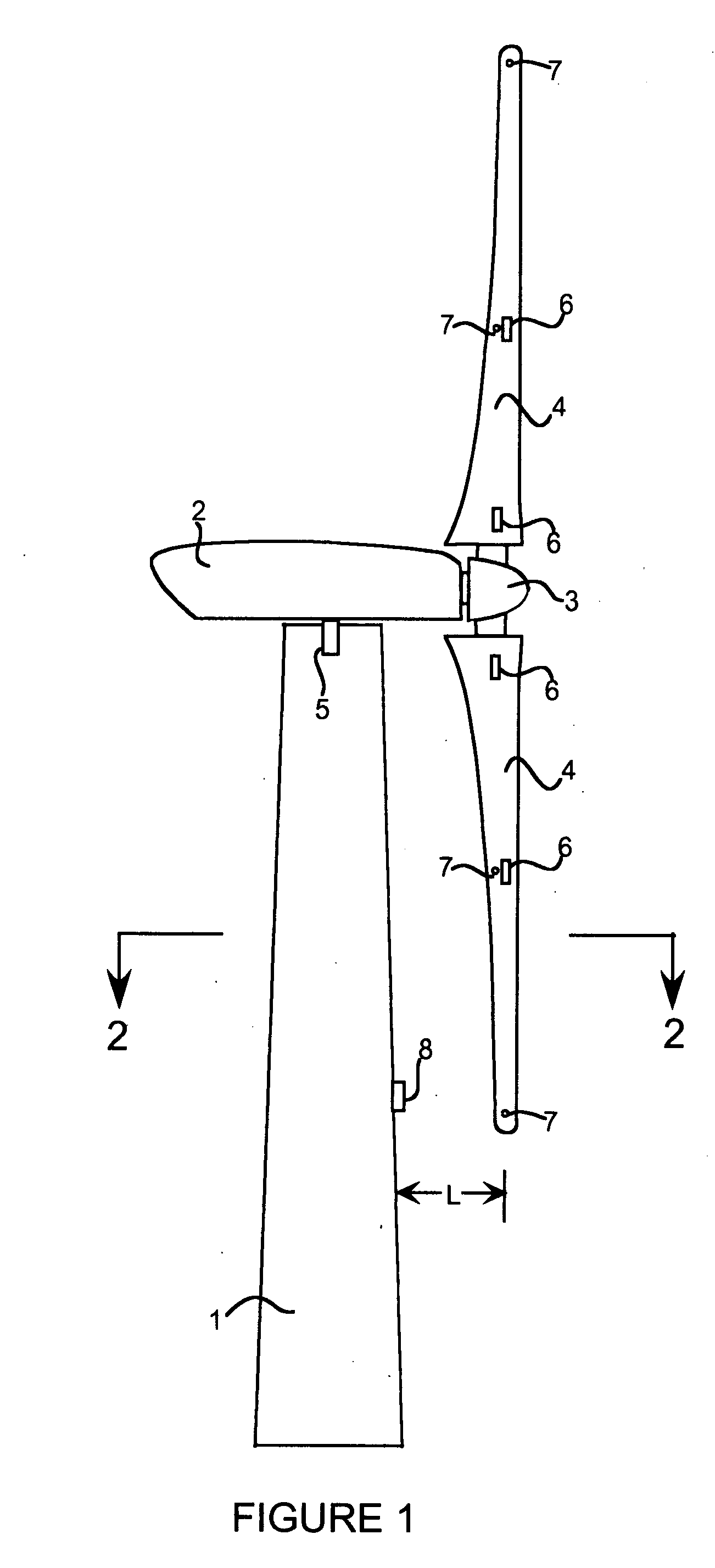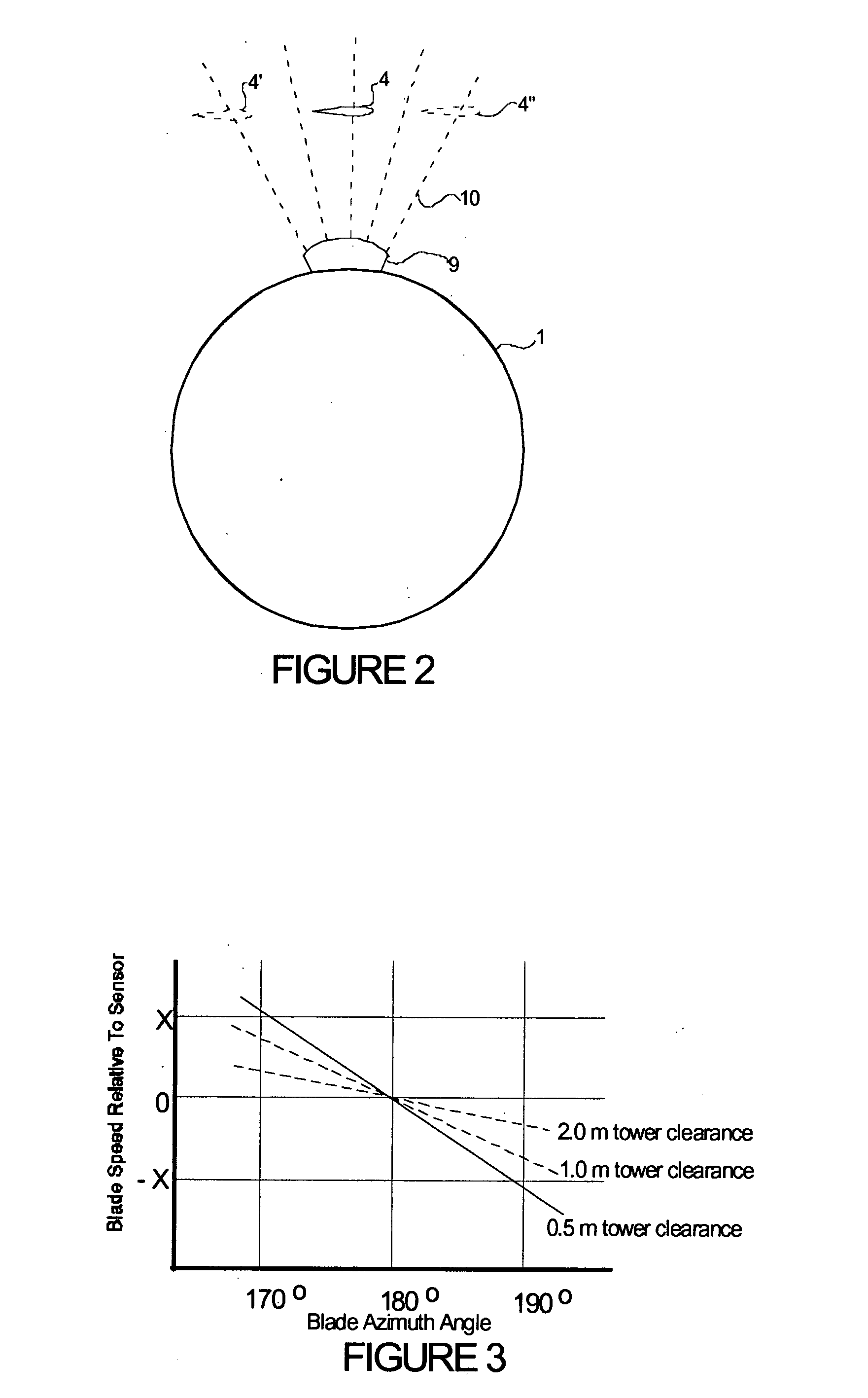Wind turbine blade deflection control system
- Summary
- Abstract
- Description
- Claims
- Application Information
AI Technical Summary
Benefits of technology
Problems solved by technology
Method used
Image
Examples
Embodiment Construction
[0013] The wind turbine of the present invention is shown in FIG. 1 and includes a tower 1 with a nacelle 2 at the top of the tower 1. The nacelle 2 contains the main shaft, associated bearings, the gearbox, the generator, and any associated hydraulic or control equipment that is necessary. Each wind turbine includes different components in the nacelle 2 and these components are not shown in FIG. 1 because they do not form a part of the present invention. Attached to the nacelle 2 is a hub 3 with blades 4 attached to the hub for rotation therewith relative to the nacelle 2. The wind turbine can include any number of blades 4, although two or three blades tend to be the most common number of blades on most commercially available wind turbines. Furthermore, the blades 4 may be oriented so that they are either upwind or downwind of the tower 1 during operation. The present invention is more critical for wind turbines with an upwind configuration, although downwind turbines have been kn...
PUM
 Login to View More
Login to View More Abstract
Description
Claims
Application Information
 Login to View More
Login to View More - R&D
- Intellectual Property
- Life Sciences
- Materials
- Tech Scout
- Unparalleled Data Quality
- Higher Quality Content
- 60% Fewer Hallucinations
Browse by: Latest US Patents, China's latest patents, Technical Efficacy Thesaurus, Application Domain, Technology Topic, Popular Technical Reports.
© 2025 PatSnap. All rights reserved.Legal|Privacy policy|Modern Slavery Act Transparency Statement|Sitemap|About US| Contact US: help@patsnap.com



